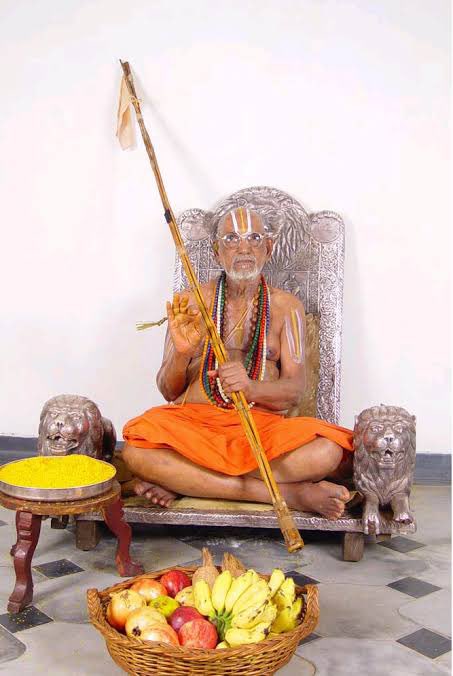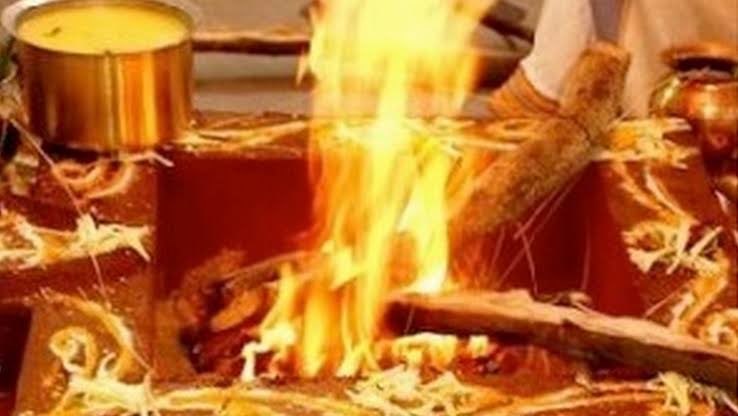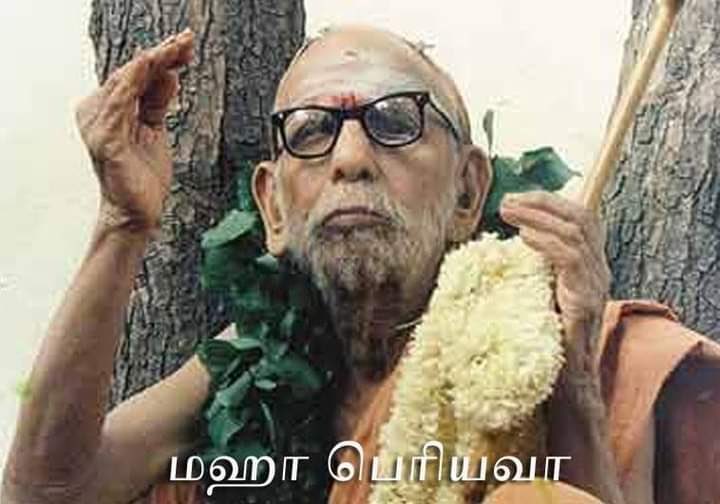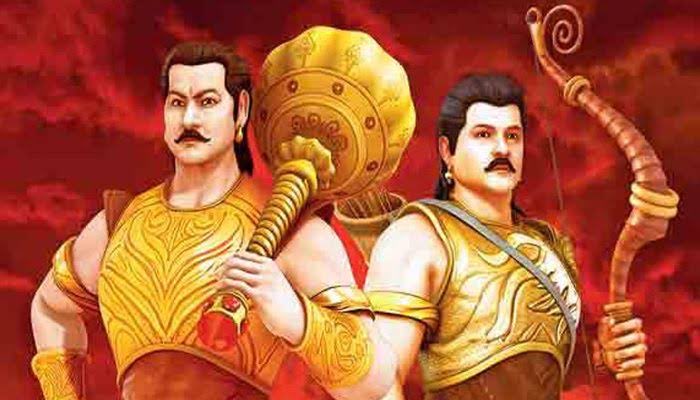
Not much is written about Sri Vaishnava pontiffs. The present pontiff of Sri Vaishnava Mutt #Sri_Ahobila_Matam is the 46th Jeeyar since its inception. Let us learn about HH.
In the present day context, only a handful of families have maintained an unbroken Veda adyayana lineage
In the present day context, only a handful of families have maintained an unbroken Veda adyayana lineage

that could be traced back to many centuries in the past. It is lord Lakshmi Nrisimha's kripa kataksham that a few families still exist that stick to the rigorous vaideeka traditions irrespective of changes in social tastes and preferences. The Aani masam of Manmatha Varusham in
1955 (June 23, 1955) was a special day in a Vaideeka family belonging to Koundinya gotram, in Thillai Vilagam, Thiruvarur District, TN. A baby boy was born as fourth child to devout dampathis, Shri Bhaktavatsalachariar and Shirmathi Rajalakshmi. The child was named Rangarajan and
proper vedic samskarams were performed at the appropriate time. At that time the child's father was Chief Administrative Officer (Peshkar) at Rameshwaram Temple Devasthanam. The child belonged to an extraordinary lineage of vaideekas both on the maternal and paternal side.
The paternal grandfather, Thirumakottai Ichampadi Krishnamachariar was a celebrated Bruhaspathy and was a leading authority in Prayogams. The maternal grandfather, Paruthicheri Venkatachariar was an Aaradhakar at Ahobila Matam during the time of 40th and 41st Azhagiyasingars.
The parents performed Upanayanam at the right age. The young boy, now qualified to pursue Veda adyayanam, started off without delay. He completed Rig Veda Adyayanam Kramaantam at Thiruvaiyaru Ammal Agraharam under the tutelage of Subramanya Ganapaatigal. Swamy learnt the
Brahmanam and Aaranya baagams under the careful supervision of Krishnamurthy Ganapaatigal of Sankara matam in Kumbakonam. People who know Swamy from his patashala days, vouch for his strict adherence to austere acharams and anushtanams.
Swamy completed study of Veda Angams
Swamy completed study of Veda Angams
including Sheeksha, Chandas, Vyakaranam, Niruktam and Jyotisham under the tutelage of Thirumalai Nasrethpettai Brahmashri Shiva Rama Krishna Saastrigal. Swamy also completed the study of Veda Baashyam.
It needs to be mentioned that Rig Veda is the longest of 4 vedas; it takes
It needs to be mentioned that Rig Veda is the longest of 4 vedas; it takes
extra ordinary dedication, perseverance, countless 'Thiruvais' (practice sessions) and blessings of Veda mata to complete poorna adyayanam uptil Ganam. In order to preserve the sanctity of Swarams different techniques were prescribed within Rig Vedam itself by the Rishis. These
include Vaakya, Pada, Krama, Jata, Maala, Sikha, Rekha, Dhwaja, Danda, Ratha, and Ghana. A devoted student can only proceed step by step in the above order to reach the status of 'Ganapaati'. Swamy did not stop at that. He became a 'Salakshana Ganapaati' as well. This meant Swamy
had mastered the art of arriving at a particular swaram for an aksharam based on its lakshana which included the word or asksharam's varnam, physical positioning amidst other aksharams, grammatical positioning, absolute meaning, contextual meaning etc. Swamy had truly been
blessed by Veda maata to achieve such a high standard of scholastic achievement. This is a rarity within the Shri Vaishnava community.
It is proof enough that sishyas should place extreme importance to every single word uttered by Swamy as it is not him but Veda Maata herself
It is proof enough that sishyas should place extreme importance to every single word uttered by Swamy as it is not him but Veda Maata herself
speaking through him. Lakshmi Nrisimhan did not want Swamy to stop at this. Swamy went on to acquire working knowledge in prayoga Mantrams in Yajur and Sama Vedams. This helped perform his Bruhaspathy kainkaryam with aplomb. Swamy is perhaps one of the very few vaideekas in the
whole of India with working knowledge of prayogams in functional Veda shakais in present times. Swamy learnt Azhwar Shrisooktis, Dharma Shaastram and Veda Prayogams from his uncle Paruthicheri Aarvamudachariar. Swamy underwent Samashrayanam at the hands of 44th Azhagiyasingar who 

also blessed him with Baranyasam. Swamy also had the benefit of granta chatushtaya kalakshepam under the feet of 44th Mukkur Azhagiyasingar. Swamy also underwent kalakshepam under Agni Hotram Ramanuja Tatacharya swamy in Shirmath Rahasya Traya Saram. Swamy was a renowned
Bruhaspathy capable of performing vaideeka karmas in 3 vedas (Rig, Yajur and Sama). He is an expert in Dharma Shaastram and anushtanams. Honours and awards come running to anyone who is blessed by Veda mata. Swamy is a very special child of Veda mata. Awards and honours wanted to
be associated with Swamy and came running to him for the honour of being associated with him.
He was awarded the title of Veda Ratnam by Shrimath Poundareekapuram Andavan Swamy in 2006. Other titles include Rig Veda Kalpa Taru, Srutyachara Kalanidhi, Veda Moorthy, Saangadhyayee
He was awarded the title of Veda Ratnam by Shrimath Poundareekapuram Andavan Swamy in 2006. Other titles include Rig Veda Kalpa Taru, Srutyachara Kalanidhi, Veda Moorthy, Saangadhyayee
Salakshana Ganapaati, Dashagranthi, Bhaashyagnya and Veda Choodamani. These titles were conferred by leading acharyas and institutions including Shrimushnam Shrimath Andavan, Gujara Ambaji Devasthanam, Veda Dharma Shaastra Paripalana Sabha, Shringeri Sankara Matam and Vedic
Sangeetha Foundation.
Swamy is a polyglot and can converse in several Indian languages. Swamy taught at the Veda Patashala run by Sankara Matam in Kumbakonam and at the time of Sanyasam was the chief adyapakar. He has trained more than 200 students in Rig Vedam, many of who are
Swamy is a polyglot and can converse in several Indian languages. Swamy taught at the Veda Patashala run by Sankara Matam in Kumbakonam and at the time of Sanyasam was the chief adyapakar. He has trained more than 200 students in Rig Vedam, many of who are
currently leading adhikaris in their field. Many of them vouch for swamy's extraordinary interest and commitment to teaching Vedam to students. Swamy entered Grihastaashramam in 1988. He married Shrimathi Kousalya devi who was the daughter of Vadavanur Chenji Thirumalai Nallan
Chakravarthy Krishnamachari and Shrimathi Jayalakshmi ammal. The couple were blessed with 3 girls and a boy. True to the family's tradition Swamy performed upanayanam of his poorvashrama son at the right age and made him undergo Veda adyayanam. It is the duty of every brahmana to
preserve and perform nitya karmas including Samithadhaanam (for brahmachaaris), Agni Sandanam, Oupasanam, Agnihotram, Vaishvadevam, Brahma Yagnyam etc. These are karmas that are performed for the benefit of upkeep of Dharma. Such anushtanaas help preserve Brahma Tejas in brahmana
families. Unfortunately such practices are nearly extinct; it is due to the grace of few vaideeka families that continue such practices, the world still has some Dharma left in itself in this Kaliyugam. #Agnihotram is a vaideeka karma which requires participation of both husband
and wife in the morning and evening sandhya times. A modern day analyst will view this as a great way to facilitate bonding between husband and wife for if a brahmana has to perform Agnihotram his wife needs to cooperate. Thus some of the vaideeka anushtanas make the husband and
wife work as a team and gradually facilitate mutual bonding. Such is the quality of foresight of our Rishis. Swamy was a nitya Agnihotri until the day he entered Sanyasaahrama dharmam. He was a Agnihotri of such a high calibre that the 45th Azhagiyasingar proudly proclaimed that
in the nearly 700 years of the history of Ahobila Matam, Swamy was perhaps the first Nitya Agnihotri! Malolan truly knows to select the best of the best calibre vaideekas to adorn his peetam.
Meeting with 45th Azhagiyasingar in his poorvashrama days
The family, abhimanis and
Meeting with 45th Azhagiyasingar in his poorvashrama days
The family, abhimanis and
kalakshepa sishyas of 45th Azhagiyasingar in his poorvaashrama days conducted the Shashtyabdha poorthy function (60th thirunakshatram) in Chennai. Many veda vidwans were invited to perform veda parayana kainkaryam for the function. Rangarajachariar also participated in the
function as part of the Rig Veda Parayaana goshti. Both the future Azhagiyasingars had a chance to interact briefly during the function. The divine kataksham of the soon to become 45th Azhagiyasingar had already fallen on Swamy nearly 23 years prior to his Sanyasam. Swamy was
still a bachelor then. Sishyas draw a parallel to the incident that took place nearly 1000 years ago when the venerable Acharya, Swamy Alavandar endorsed the young Bagavadh Ramanuja as 'Aamudhalvan' (the chosen one) in Kanchipuram at Varadaraja Perumal temple. 

The acceptance of Sanyasam at his Acharyan's command at a relatively young age with young family members to support is by itself proof enough of Swamy's extraordinary vairagyam. However this vairagyam was not a onetime instance due to divine sankalpam. Swamy's life is full of
such instances when he demonstrated vairagyam at crucial times. On one occasion, during Swamy's poorvaashrama days, his Dharmapatni was expecting their fourth child and due to some complications the lives of both the mother and child were at risk. Swamy did what he knew best:
recite appropriate Veda mantrams and Kamasikaashtakam slokam many times. Veda Mata never let down Swamy and came to his help at this crucial moment. Both the mother and the child survived.
On another occasion, Swamy was to participate in a prominent Sadas in Ujjain, of leading
On another occasion, Swamy was to participate in a prominent Sadas in Ujjain, of leading
Vedic scholars from all over India. Only two vidwans from Tamil Nadu were invited and Swamy was one of them. There were expectations of awards, honours, cash prize etc. However the day of the sadas coincided with Maasa Pirappu tharpanam; travelling to the sadas meant Swamy had to
forego the day's tharpanam. He was not willing to compromise and expressed his inability to attend the Sadas! As days passed, Swamy had completely forgotten about the incident. But Veda mata never forgets her cherished son. The organisers of the sadas made sure Swamy received
appropriate honours, commendation letter and a cash sambhavanai of Rs. 10,000 (a respectable sum in those days) at his residence. Thus swamy led a life of gnana, anushtana and vairagya which were just second nature to him. Our sampradayam mostly expects its Acharyas to lead a
normal life of brahmacharyam and grihastham before entering into sanyasam. The ascetic order does not require one to acquire Sanyasam at a young age. This paves way for an individual to mature to the fullest possible extent, having seen life in all its stages, before becoming an
Acharya. Exceptions do exist but they are few and far between and are mostly divine occurrences.
In the period surrounding the year 2008, the 45th Azhagiyasingar had a premonition about his potentially fragile health. The great leader that he was, he decided to appoint a
In the period surrounding the year 2008, the 45th Azhagiyasingar had a premonition about his potentially fragile health. The great leader that he was, he decided to appoint a
successor without delay. The Acharya was surrounded by a bevy of vaideeka stalwarts who had all the lakshanas of an Acharya. Yet the 45th Azhagiyasingar chose Swamy to succeed him. It was a momentous and yet emotional day for the 45th Azhagiyasingar and Shri matam sishyas. Swamy
was only 54 years when the succession call from Malolan came. He had 3 young unmarried daughters, one young son and a wife who had been with him for 21 years, a relatively short period of time to be separated by sanyasaashrama dharmam. The entire matam was in tears when the Swamy
accepted the divine call from the 45th Azhagiyasingar. 45th Acharya and Sishyas were at once joyous and sad; joyous because the Shri Matam was in safe hands; moved to tears at the most graceful way Swamy and his family conducted themselves at the time of his verbal promise and
acceptance. For a few days after the Swamy had left Shri Matam to look into his family affairs for one last time, the 45th Acharya was in tears at regular intervals whenever the thought of Swamy and his gracious acceptance came to his mind. He kept repeating about the benevolence
and Vairaagyam of the soon to be 46th Azhagiyasingar to every single Sishya that came to wish him. On May 8, 2009 the Veda Shreshtar accepted Sanyasam at Dasavatara Sannidhi in Srirangam. Once again a dual sense of happiness and sadness pervaded. The Swamy's poorvashrama Bhaarya
was an epitome of the definition of 'Dharma Patni'. The grace and elegance with which she conducted, the expertise and comfort with which she participated in the vaideeka karmas preceeding Sanyasam were proof enough that Swamy's poorvashrama life was drenched fully in vaideeka
traditions. It was proof enough that Swamy indeed was a Nitya Agnihotri, for if his wife had not teamed up and cooperated with him he could have never achieved that distinction. The quality of anushtanams of vaideeka brahmanas are entirely dependent on the extent of cooperation
received from their wives. Swamy's wife had truly supported him throughout his Grihasthaashramam. Swamy was almost immediately affectionately referred to as Chinna Azhagiyasingar. He was verily a young lion cub that was being prepared for the task of occupying the Simhasanam
eventually. Swamy's gentle manners and demeanour earned the affection of all the Shri Matam sishyas at once. Swamy conducted his daily Sanyasa dharmams with aplomb. He along with the 45th Azhagiyasingar conducted many sancharams and dolai utsavams. Swamy ably supported the 45th
Acharya by conducting Samaashryanam and Baranyasam to sishyaas as and when the 45th Acharya wished. Immediately after 45th Azhagiyasingar attained Paramapadam, the 46th Azhagiyasingar supervised the holy task of creating a Brindavanam for the great Acharya. On May 23rd 2013, in
keeping with the wishes of 45th Azhagiyasingar and Shri Matam traditions, Swamy's Pattabhishekam was conducted amidst Veda Gosham. Shrimath Poundarikapuram Andavan participated in the mahotsavam and blessed the 46th Acharya. Malai maryadai from various divya desams and abhimana
sthalams were offered to the newly coronated Acharya. He accepted the Divya Desa honours and greetings from Sishyas in his own gracious style just to fulfil the wishes of his 45th Acharya and Malolan. A renewed vigour permeates the Shri Matam these days. The 46th Acharya has
started his sancharam obligations at the request of sishyas. Many sishyas have started performing their Samaashryanam and Baranyaasam at the Acharya's feet during his sancharam. It is the duty of sishyas like us to aim to live to at least a small fraction of the quality of life
our Acharyas have lived and demonstrated. Let us pray to Lord Shri Lakshmi Nrisimhan to bestow good health and long life to our beloved 46th Acharya so he leads us in this 21st century. Post sanyasam, the Acharyas beget an even bigger family than the ones they had in their
poorvashrama days. Let us all unite together with a feeling of one big family under the aegis of our Acharya. Let us sing #Pallaandu to our Acharyas' well being, kainkaryams and keerthi. The mighty Rig Vedam ends with an universal prayer:
The sacred verses extol us to assemble
The sacred verses extol us to assemble
and speak together; appeals that our minds be focused in unanimity; we share a common space, a common assembly and a common mind. We are all children of one Lord; let our thoughts be united; our resolve be united and let us all move towards the supreme Brahmam together; Universal
happiness pervades as we lay before the supreme lord in unison.
Let us, Shri Matam sishyas, be united as per the above prayer and work in unison towards a vaideeka path shown to us by our Azhwars and Poorvacharyas.
Acharyan Thiruvadikale Charanam
Source: Sri Ramji, Chennai
Let us, Shri Matam sishyas, be united as per the above prayer and work in unison towards a vaideeka path shown to us by our Azhwars and Poorvacharyas.
Acharyan Thiruvadikale Charanam
Source: Sri Ramji, Chennai

• • •
Missing some Tweet in this thread? You can try to
force a refresh











